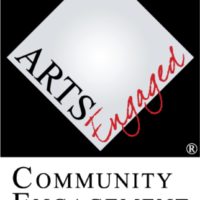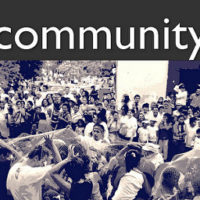Last time, I mentioned the idea of "small wins." It's a common concept in change management discussions and a fairly self-evident one. Still, I've been struck by the number of community engagement professionals leading organizational transformation to community engagement who have cited it as a critical factor in the process. These mini pilot projects developed jointly with new community partners lay the groundwork for bigger things, establish … [Read more...]
Understanding Engagement
ArtsEngaged is pleased to introduce a new resource for engagement practitioners. We are making available the content of Understanding Engagement, Unit 1 of our Community Engagement Training course. The Unit is divided into two sections. The first concentrates on definitions and principles of effective community engagement practice. The second addresses objections to community engagement, some of the reasons it is so important to the future of our … [Read more...]
Funding Engagement
In the relatively near future I will be facilitating a Community Engagement Network conversation addressing the topic of "Funding Engagement." (To join the network, click here. If you are not Facebook friendly, email us at CEN@artsengaged.com) I get questions on this topic frequently and always have to gird myself before responding. So here is what I try to bear in mind in answering the questions: If you have to have funding before you can begin … [Read more...]
Wristband
https://youtu.be/9lJHVpH5v8Q Today we use a song by Paul Simon as our text. If you don't know "Wristband" go ahead and watch/listen. We'll wait for you to come back. (If you want, skip ahead to 18 seconds in.) But pay particular attention to the "message" verse about 2/3 of the way through. The riots started slowly with the homeless and the lowly Then they spread into the heartland towns that never get a wristband Kids that can't afford the … [Read more...]
Targets and Timeframes
I have recently found myself concerned with issues related to measuring community engagement, particularly its benefits to arts organizations. (Two-Phase Engagement; Reach and Frequency) There is a tendency among some to know that community engagement is a good thing and, therefore, to resist attempts to measure it's impact. If I'm honest, I may sometimes find myself in that group. There are others who assume that community engagement is at best … [Read more...]
Reach and Frequency
I always proceed with fear and trembling when I venture into the topic of marketing. As I have said in the past, I am not a marketer. Nevertheless, there continue to be numerous valuable lessons from marketing that should support our work in and understanding of community engagement. Stick with me. This will get a tad "wonky." "Reach" and "frequency" are marketing terms that have much application to the discussion of various types of … [Read more...]
Lots of Coffee
Recently, in a conversation about beginning relationships with new communities, one of our new ArtsEngaged trainers, Anne Cushing-Reid, commented that, especially where there is negative history to be overcome, "There's a lot of coffee in our future." I flashed back to the thousands of cups of coffee I've consumed in the process of getting to know people. "Coffee" is, of course, a place holder for whatever means of social interaction is employed … [Read more...]
Justice and Engagement
In March I participated in the Intersections Summit hosted by Milwaukee Repertory Theater. It was a gathering of community engagement practitioners from theaters (mostly) across the U.S. As frequently happens, the conference sparked a number of thoughts. Last week I began by reflecting on the meanings of the word engagement. (The Problem of “Engagement”) In the opening keynote Carmen Morgan, a gifted diversity/equity/inclusion speaker and … [Read more...]
Communities of Necessity
As part of the community engagement planning process virtually every arts organization has to make choices about which communities they want to seek out as partners. (We are talking here about new communities. Current stakeholders should, of course, be the first community with which to engage more fully.) In almost every circumstance it has been my practice to recommend minimizing the "degrees of separation." That is, go first to communities with … [Read more...]
What They Want
There is an unfortunate tendency on the part of some in the nonprofit arts industry to believe that it is their responsibility to provide to the public art that they think the public needs. This is usually based on little to no understanding of what those needs might actually be. In addition, when examined a bit, what they are really giving the public is the art that they want to give them. Anyone’s true need has little to do with it. There is a … [Read more...]









